|
The Ballinasloe Towns A.F.C. Under 14s gave a tremendous display in the Schoolboys Football Association of Ireland National Cup, with the team going blow for blow against Gorey in the thrilling last 16th match. Unfortunately falling short in their penalty shootout, the young football stars performed an excellent game.
Kicking off the game on March 5th, John Kelly shot a brilliant free kick towards the head of skipper Aaron Treacy who took the first goal of the match. Before half time, Gorey equalised the game with a score of their own. The young sportsmen regained their lead with a corner kick from Fionn Duffy leading to an excellent header from Matthew Blair. Just after the 60 minute mark, their opposition scored again, with both teams now equalised. The match was forced to go to penalties, and although they earned their first shot, the following two penalties were saved and the other hit the goalpost. Gorey despatched three penalties which send them through to the quarter finals. Nonetheless the match was a spectacle to watch, with Club Development Co-Ordinator Johnny Walsh commending the “superb effort from every member of the under 14 squad and their brilliant ongoing development”. The Man of the Match was credited to James Connolly who played defence for the Ballinasloe team. The Under 13s team also made a name for themselves reaching the final 16 of the SFAI National Cup, but were defeated by Champions Pike Rovers who scored 2-0 on February 25. Ballinasloe started extremely well with Adam Lloyd and Paddy Ó Connell coming very close to breaking the initial deadlock. Ten minutes from the match’s end, their challengers opened the scoring with a well taken free kick. The Town players threw everything they had to secure an equaliser, but unfortunately were hit on the break when Pike scored their second goal during the final five minutes of the game. It was not a complete loss for the Under 13s that week, as the following day Adam Lloyd and Éanna Colleran would both attend the National Assessment Session at the AUL Complex in Dublin, representing Ballinasloe in a display against the top juvenile soccer players in Ireland. In other news, the development of replacement Astro-Turf pitches and floodlights on the club’s Curragh Grounds is nearing competition, and soon players and the public will be able to practice on the state-of-the-art sportsground. Johnny Walsh stated that the Club will shortly be organising an official launch, premiering the addition of the new facility to the Ballinasloe Community. Meanwhile the Brown Underage squad confirmed their new Kit Sponsorship Deal with Kellers of Main St as the finalise preparations for their trip to Hartlepool , Liverpool over Easter break. If you or your child is interested in joining Ballinasloe Town AFC, you can contact the club secretary by email at [email protected] or by phone at (087) 633 7093. Visit Ballinasloe Town AFC on Facebook!
0 Comments
The Ballinasloe Bowls Club won the prestigious Active Retirement Ireland Billy Pope Cup for the first time in 22 years, being the second town to win the trophy in that period withstanding the dominance of the city teams.
Thirty-two teams entered and contested in several venues across four days, kicking off in Galway City inside the Mervue Community Centre, and finishing in Loughrea. Along the competition, Ballinasloe defeated 2020 title-holders Corofin, and then overcame the challenge of Mountbellew in the quarter-final. The competition concluded with the semi-finals and final being staged in the Temperance Hall Loughrea on February 22 this year. Ballinasloe triumphed against home-players Loughrea to pass the semis by a margin of two points. The following match saw the two squads from Salthill competing against one another to place in the final, with the area’s Team One beating their Team Two by a margin of three points. The decider was now set for Ballinasloe versus Salthill One, played over nine ends. Ballinasloe’s team featured Brendan Kelly as Skip, along with Joe Murphy and Michael Kelly against Salthill’s team with James Sargent as Skip along with Michael Dempsey and Breda Sargent. The squads went blow for blow, with one point being scored in each round. After six ends both teams were equal in score, with three totalled each. Ballinasloe pulled away in the penultimate stage to win the competition by a margin of three, with the town scoring a final result of six points and Salthill three. Winning this Cup is a remarkable achievement for the Kelly twins and Joe Murphy. The trio played exceptionally against their seasoned and talented opponents. The team’s skip Brendan Kelly was a former International Discus Thrower and represented Ireland on a few occasions within Bowls competitions in the 1970's. The club welcomes new members, open to men and women aged from 50 to 90 years. The sport provides plenty of exercise, social interaction, and opportunities to learn good sportsmanship and etiquette. Ballinasloe Bowls gather twice a week, early every Monday from 10:30 until 12:30 and late every Thursday from 19:00 until 21:00, at the Emerald Ballroom in town. The first three attendances are free of charge and €3 per occasion afterwards. To join the group, you can contact the Western Bowls Association at [email protected]. For almost 1500 years, very little light has been shone on Saint Caireac Dergain, founder of one of the most important Early-Christian convents in Ireland in Clonburren, Moore, but recently a special mass was held to honour her feastday.
A daughter of sovereigns Connal and Briga Dearg, Caireac came to the area a young woman with a mission to establish an Abbey and an order of sisters to minister to the locals. A princess of Airgíalla, one of the three kingdoms of Ulster, she was reared in Rath Mor, Tyrone to the Colla de Crioch tribe along with her three sisters Fanchia, Lochina, and Darina who have all since become Celtic Saints. It was agreed that the then King would allow her the lands of Clonburren to build an Abbey and, as was tradition in those times he granted the manpower and finances to build a fort in Clonburren. The Abbey was then established in the region and became a school for the daughters of the wealthy, many whom widows joining the order to work the lands and tend the sheep. The nuns spent their days administering to the sick and embroidering alter cloths and wall hangings. They copied the gospels and answered calls to prayer several times a day from dawn to dusk. Holy water was used to bless the houses, the sheep, their food and themselves. They taught the daughters of royalty including Rincinn, the niece of King Carbre Crom. Additionally the Queen of UI Maine and her ladies would often donate clothing and materials to the sisters every year. Visiting Saint Enda on the Aran islands, Caireac founded two churches and a nunnery on Inishmaan. She would later die and be buried on the island, recorded in the Annals of the Four Masters as 577 AD. Although her remains are unfound, it is possible that in 578 some of her bones were brought to her principal Abbey in Clonburren, as part of a tradition in lifting a saint’s remains from the ground and bringing them to a place of honour. On February 9th, local couple Xandra and Padraig Kilduff hosted a special mass in Moore to commemorate the local saint. Held by parish priest Fr. Michael Molloy along with a local choir of school children and musicians, the Saint’s life was commemorated. Padraig marked the occasion by presenting a painting he created of Caireac Dergain. The saint’s day is marked every year on the nineth of February to celebrate the patron who contributed a great deal to local history and the early Christian Church. By Barry Lally In 1351, William Buí O’Kelly, Lord of Hy Many, invited all the bards, brehons, artists, musicians and jesters from across Ireland to a Christmas Day feast at his castle on the banks of Lough Ree near Knockcroghery in County Roscommon. The month-long festivities gave rise to the expression “Fáilte Uí Cheallaigh”, still current in Irish, meaning hospitality of exceptional warmth and munificence. As he watched the departure of his guests from the temporary village he had constructed for their accommodation, O’Kelly was heard to ruefully remark: “Nach raibh mise an t-amadán mór?” (Wasn’t I the great fool?) Two years later he founded Kilconnell Conventual Franciscan Friary on the site of the 6th-century monastery of St. Connal. Besides the O’Kellys, the friary enjoyed the patronage and protection of other powerful Hy Many families such as the O’Donnellans, the O’Maddens and the Wards from the 14th to the 18th centuries, and the tombs of many of its patrons survive inside the ruins. In the 1460s, Malachy O’Kelly, a great-grandson of the founder, induced the friars to adopt the Observant reform involving a stricter interpretation of the rule of St. Francis. Between 1405 and 1534 all but one of the bishops of Clonfert were friars, and the bishop of Clonfert was one of the clerics most frequently called on the execute Bulls in favour of the friars. The presence of these friar-bishops must have played a crucial role in promoting the various forms of mendicant activity in the diocese. Though the friary had been officially dissolved in 1541 and granted to two English lessees, when Sir Richard Bingham, Governor of Connacht, garrisoned his troops there in 1580 he insisted that the buildings not be damaged or the friars molested. Similarly, in 1596, when the friary was occupied for nine months by the forces of Captain Stryck during a conflict with the O’Kellys, the friars were allowed to remain. Moreover, Kilconnell was one of only five Irish friaries still inhabited and in good repair in 1616. In 1351, William Buí O’Kelly, Lord of Hy Many, invited all the bards, brehons, artists, musicians and jesters from across Ireland to a Christmas Day feast at his castle on the banks of Lough Ree near Knockcroghery in County Roscommon. The month-long festivities gave rise to the expression “Fáilte Uí Cheallaigh”, still current in Irish, meaning hospitality of exceptional warmth and munificence. As he watched the departure of his guests from the temporary village he had constructed for their accommodation, O’Kelly was heard to ruefully remark: “Nach raibh mise an t-amadán mór?” (wasn’t I the great fool?) Two years later he founded Kilconnell Conventual Franciscan Friary on the site of the 6th-century monastery of St. Connal. Besides the O’Kellys, the friary enjoyed the patronage and protection of other powerful Hy Many families such as the O’Donnellans, the O’Maddens and the Wards from the 14th to the 18th centuries, and the tombs of many of its patrons survive inside the ruins. In the 1460s, Malachy O’Kelly, a great-grandson of the founder, induced the friars to adopt the Observant reform involving a stricter interpretation of the rule of St. Francis. Between 1405 and 1534 all but one of the bishops of Clonfert were friars, and the bishop of Clonfert was one of the clerics most frequently called on the execute Bulls in favour of the friars. The presence of these friar-bishops must have played a crucial role in promoting the various forms of mendicant activity in the diocese. Though the friary had been officially dissolved in 1541 and granted to two English lessees, when Sir Richard Bingham, Governor of Connacht, garrisoned his troops there in 1580 he insisted that the buildings not be damaged or the friars molested. Similarly, in 1596, when the friary was occupied for nine months by the forces of Captain Stryck during a conflict with the O’Kellys, the friars were allowed to remain. Moreover, Kilconnell was one of only five Irish friaries still inhabited and in good repair in 1616. With reference to the friary, in 1709 a traveller noted that “this abbey was in repair and inhabited in King James’s time, so that the woodwork, the wainscot and ordinary painting still remain.” He also recorded that the buildings were surrounded by a wall of skulls and bones, supposedly the unburied remains of the fallen at the Battle of Aughrim. The wall was about 4 feet high and 5 feet 4 inches thick. It doesn’t appear to have survived intact into the following century, for in 1827 Rev. Caesar Otway, a Church of Ireland clergyman, reported that nothing remained of it but “an immense stack of human bones.” Later in the century Baron Clonbrock used his influence to have the bones and skulls properly interred.
The most interesting of the friary’s altar-tombs is located near the west door of the nave and dates from the late 15th century. It has been described as having a flamboyant canopy with a front divided into six panels, “each one filled with a saintly figure, surmounted by its respective name, which are as follows: St. John the Evangelist, St. Louis of Toulouse, St. James, St. Catherine of Alexandria, the Virgin Mary, and St. Denis of Paris. The finial is divided into two panels, the one on the left is the figure of a bishop, and on the right is St. Francis.” Neither the owner of the tomb nor its occupant or occupants have been identified. Another tomb deserving of note is found in the north wall of the chancel and described as “altar-shaped with a rich canopy of quite different design (to that located at the west door), consisting of a rose tracery on a circular arch, the panels in front being plain.” Of mid-15th century construction, its original owner is unknown. At some stage it was appropriated by the O’Daly family. Kilconnell Friary is one the gems of Ballinasloe’s hinterland and well worth a visit, not only because it contains within its walls some of the masterpieces of Irish medieval figurative sculpture, but also for the pervasive sense of history that the place exudes, a special place where we feel in communion with our Gaelic heritage and that helps locate us in the continuum of time. To quote the late Rabbi Jonathan Sacks: “Through personal identification with the great moments of the past they become part of what makes us who we are. We become characters in a continuing story which began before we were born and will continue after we have ceased to be. Without history there is no identity, and without identity we are cast adrift into a sea of chance, without compass, map or destination.” Join us on Thursday, 30 March in Gullane's Hotel from 7𝙥𝙢 𝙩𝙞𝙡𝙡 8𝙥𝙢 for our next Pulse Club networking event!
Whether you're an established business owner, a budding entrepreneur, or a new business, this is the perfect opportunity to meet new people and grow your network. All welcome - Please RSVP to [email protected] or drop us a PM. We can't wait to see you there! The winners in each category of this year’s Ballinasloe St. Patricks Day Parade included Scoil Uí Cheithearnaigh and Creagh NS joint for the Education category, Colohan’s Céilí for the Cultural category followed by the Milkshake Dancing Academy in 2nd, Ballinasloe AFC for the Sporting category followed by runner-ups Ballinasloe GAA and Ballinasloe Mini Rugby, Active Retirement for the Voluntary Category followed by the Civil Defence in 2nd, Clarke’s for the Commercial category followed by Hogan’s Trailers in 2nd and a merit for Wag “N” Tail Pet Shop. A Special Community Effort Award was issued to Ballinasloe’s Indian Cricket/Sports Club in 1st and the Ukranian Friends Welcome in 2nd. The Overall Winner of the Tony Colohan Memorial Trophy was given to joint winners Scoil Uí Cheithearnaigh and Creagh NS. The Facebook LIVE screening from this platform had a reach of almost 10,000 views over the weekend, which combined by the Garda estimates of 5,000 people being in town for the parade is welcome news for the organisers and sponso! Visit Ballinasloe Life on Facebook for photos and videos! The AGM took place for Ballinasloe Town Hall Theatre, highlighting the many achievements over the past year. The new committee were elected to serve were Máire Hughes, Frances Leahy, Aoife Vaughan, Alan Harney, Elaine O’Hanlon, Mary Barber, Ben Parker, Noel Lohan & Alison Greene.
Gerry Sweeney, who has been a member of the Committee and Director of the Company to the Building since its formation, stepped down. He was the last serving original member of the original group that acquired the lease from the Church Authorities which has 23 years left to run. Chair noted his experience and expertise will be greatly missed. His wealth of knowledge on the history of the Hall is second to none, and all congratulated him on his service. Máire Hughes detailed all of the incredible work undertaken by the Committee over the course of the year: 17 official meetings were held, fundraising events took place, grant aid was secured, much was achieved within the Hall. The Theatre was host to many productions, dance classes, cinema screenings, recordings and various rehearsals throughout the year, culminating with the very successful PANTO “Cinderella” production last December. Much work went into the clearing and refurbishment of office spaces to the front of the building with particular gratitude being paid to Gerry Maloney and members of the CE Scheme for their involvement. This reorganisation allowed the group to rent office space from July to December. There are still several rooms available for short- and medium-term rental and anyone interested can contact Michael McCullagh at (090) 964 9939. Accountant James Coyle gave a detailed overview of the Theatre’s finances, detailing all income and expenditure. He highlighted that the figures shared covered the accounting year March 2021 to March 2022, resulting in a net surplus of over €9k which was up from a deficit of €4k for the previous 12 months. He emphasised the finances were in a good position showing income at €50,249 and Expenses at €38,909 considering that the Theatre was restricted with the pandemic. The Community Centres Investment Fund application was successful just before Christmas, and the Theatre is to be awarded a total of €251,900 in funding. Earmarked to replace all existing windows with double glazed sash windows, replace the doors and repair a portion of the stonework. In addition a portion of this grant will be used to update the Theatre’s lighting system to modern LEDs. The Committee confirmed that a Project Manager would be engaged to oversee this huge investment in the future fabric of the building – as it is the largest successful grant ever awarded to the ongoing development. As part of a matched funding element to this grant, they will be launching their “Buy a Pane of Glass” campaign in the coming weeks to raise the necessary finances. - keep an eye out for this and consider donating. Sympathies were expressed at the meeting to the families of the late Clare Curley and Eugene Ward – who were stalwart supporters of the Theatre. “We’d like to thanks the townspeople who continue to support us, Linda Cummins and Tus, Patricia Kelly and Karyn Gavin in GRD, Mary Mc Gann and indeed Sharon Duffy Arts Officer at Galway County Council, as well all of our wonderful hard working volunteers “, concluded Máire. If you would like to become involved with the Theatre, they can be contacted via the Ballinasloe Town Hall Theatre Facebook and Instagram accounts, or by emailing [email protected]. Ballinasloe Social Services received a grant of €80,000 as part of a new Community Centre’s Fund founded by Minister Heather Humphreys T.D. ; a key focus in government strategy to invest in community centres and halls across Galway. The Social Services hope to use this funding to install new solar panels, windows and doors, an electrical system, a stove, and an upgrade to their meeting rooms. These improvements will be installed on the premises within the old building and the new extension constructed in 1986. This exchequer funding will aid the 50 year old organisation to reduce heavy utility costs, allowing them to invest in services which aid the elderly and vulnerable. As the organisation only receives partial grant funding by the government, this new allocation will also benefit the ongoing costs for running the services. Additionally, the team hope to upgrade the pre-school garden on the premises, having received a grant of €30,324 from the Late Late Toy Appeal in 2021 to improve the quality and safety of the play area. Ballinasloe Social Services are a group dedicated to improve the lives of the elderly, physically disabled and people in need within our town and hinterland. The organization recently celebrated their 50th anniversary and hopes to continue supplying resources to aid their clients.
Volunteers assisting with the charity provide many of the services including regular day care, food deliveries through Meals on Wheels, and assistance for kids via the childcare facility. There has been an increased demand for aid within the town, with many people requiring social needs due to the isolation caused by the pandemic. The group continues their ongoing fundraising with monthly raffles where participants can enter a draw to win amounts of €100. Critically, the organization received support from the Ballinasloe Enterprise Centre with a Christmas Jumper Appeal which raised €400 for Ballinasloe Social Services . Furthermore, the social service can be supported by their donation page at www.ballinasloesocialservices.ie. Director of Services Teresa Coughlan is very appreciative of the aid provided to the group by our town: “Without the people of Ballinasloe, we wouldn’t be here today. They have given so much to us over the years in the form of financial assistance with fundraising and donations, as well as with volunteers”. If you are interest in the services the organization provides or if you would like to join their membership scheme, the group can be contacted at (090) 964 3217. First Woman Sabina Higgins officially launched the Galway Public Libraries Decade of Centenaries Programme.
As part of the Decade of Centenaries Programme Galway Public Libraries developed two projects which have been running during 2021 – 2022. 'A Dialogue through Poetry and Music' is a collaboration between five poets and musicians who were commissioned to create new poetry and musical works on the theme of 1921. Participating poets included Emily Cullen, Louis de Paor, Luke Morgan, Noelle Lynskey and Nuala O’Connor. They were joined by musicians Ciaran Cannon, Dana Lyn, Ger Fahy, Emily Greaney with Tomás and Róisín Mannion. 'Artists & Activists: 1922 Women in a Changing Cultural Landscape' highlighted the role of women as artists and creatives in the early twentieth century by showcasing the contributions of specific women who revolutionized Irish art including ‘domestic’ art pieces such as weaving, embroidery and clothing. The project included 4 commissions covering the fields of music, song, dance, and craft. Find out more by visiting Ballinasloe Library on Facebook! Ahascragh Distillery’s three Massive copper pot stills made their way from Forsyths in Scotland to Ahascragh, now sit behind the distillery’s large window in the heart of the village.
Installation of the bespoke modern equipment is currently underway, with commissioning beginning in the coming weeks with plans for first distillation in early 2023. These copper stills will enable founders Gareth and Michelle McAllister to distil some of the first zero-emission spirits in Ireland and change the traditional energy source for Irish whiskey production. Ahascragh distillery will be an all-electric distillery using 100% renewable energy, with 70% coming from wind farms and 30% generated on-site through solar panels and hydro wheels in the mill race. Distillation is a highly energy intensive process, traditionally using fossil fuels or gas to generate the needed thermal loading. No fossil fuels or gas on will be burned on site, but instead will use high temperature heat pumps and an efficient energy storage system to produce their spirits. The technology and design has been validated and supported by the Sustainable Energy Authority of Ireland’s EXEED programme, aimed at organisations who are planning an energy efficient investment project. Cáit Baxter has been introduced as Distillery Manager, coming from the team at Dingle Distillery, bringing a wealth of knowledge and experience to the role. She is looking forward to overseeing the commissioning process and leading the first distillation in the coming months. A new series of short films “Distillery Diaries” explores Ahascragh distillery’s journey to making whiskey history in the West of Ireland. The films have highlighted work by local contractors and tradesmen, key milestones, and behind the scenes features. The most recent film is a look back at the past 12 months of construction and progress with founders Gareth and Michelle McAllister. In the fourth edition of the Distillery Diaries series, Michelle McAllister highlights her interest in restoring the Ahascragh warehouse: “When I first saw the building, I knew it had a story to tell. I knew that there was a lot more it had to give. I think we all rush to build new and forget about our past and forget about the beautiful structures that we have built in years gone by.” Last year, their whiskey and gin won many international awards including the International Wine and Spirits Competition, World Gin Awards, The Spirit Masters, The Design and Packaging Masters and The Irish Quality Food and Drink Awards. Most notably, their product Clan Colla 20 Pedro Ximénez won a gold medal at the Irish Whiskey Awards, and Xin Gin was named the best in Ireland at The Gin Guide Awards. The Family Bond releases are available to buy in Carry out and Grenham’s off license in Ballinasloe, and to taste in bars and restaurants across town, Galway and beyond. |
CLICK HERE to read the Latest Ballinasloe News Articles
June 2024
|
The Town Team was set up by BACD Ltd. to revive the fortunes of Ballinasloe and its hinterland. With the main focus to build on the town’s many strengths, change existing negative perceptions and bring about measurable improvements in the town centre economy and its wider social value.
|
Ballinasloe Area Community Development Ltd.
Ballinasloe Enterprise Centre Creagh Ballinasloe Co. Galway |
All generic photos and images have been sourced and are free of copyright or are clip art images free of copyright. Photos of Ballinasloe have been donated by BEC. If you have any photos that you would like included on the website please email us
Copyright © All rights reserved, 2024 BACD

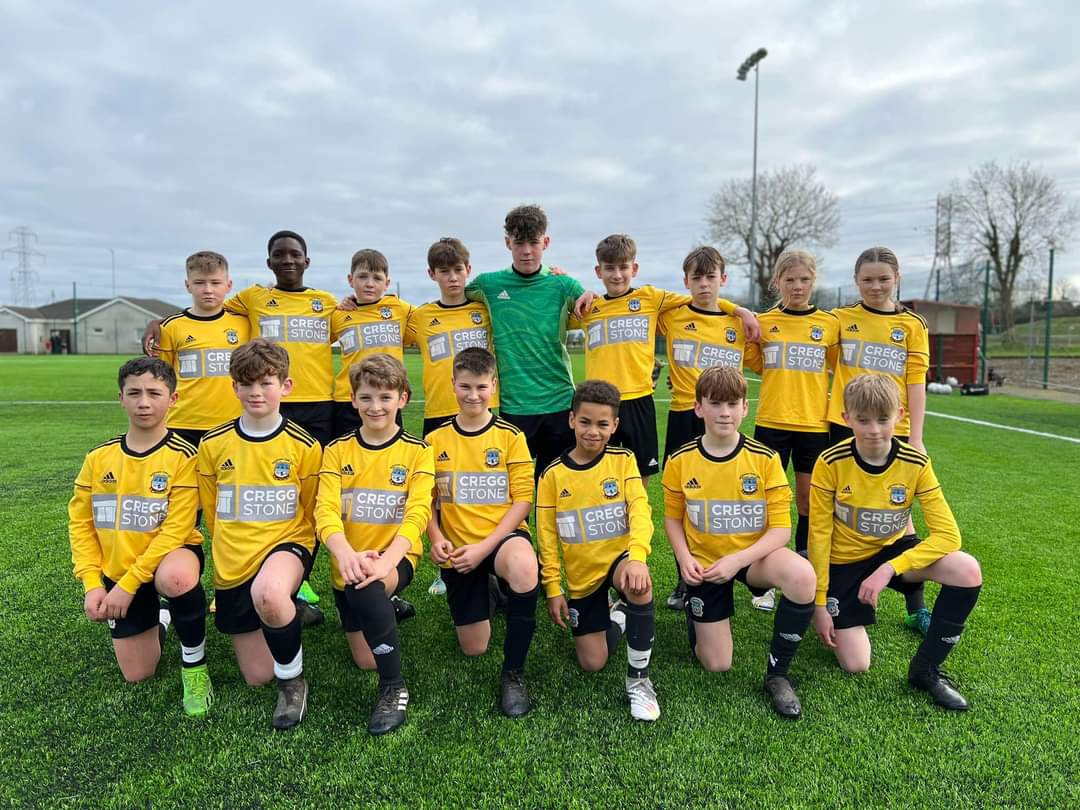
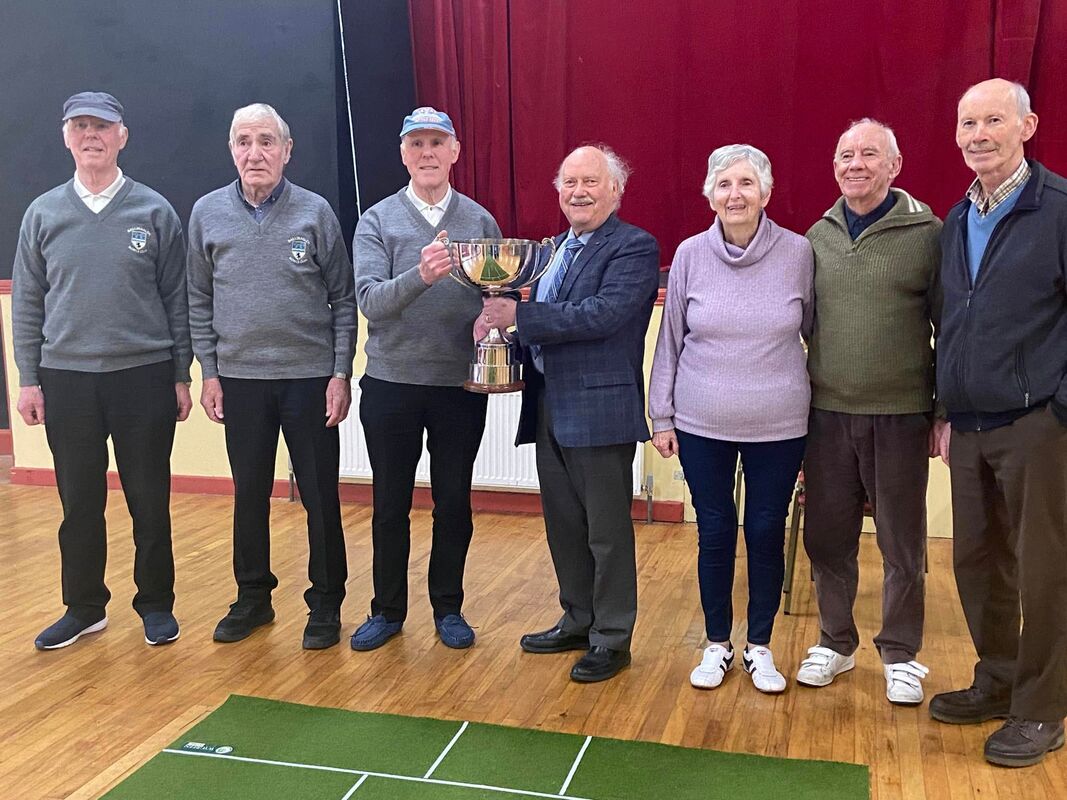
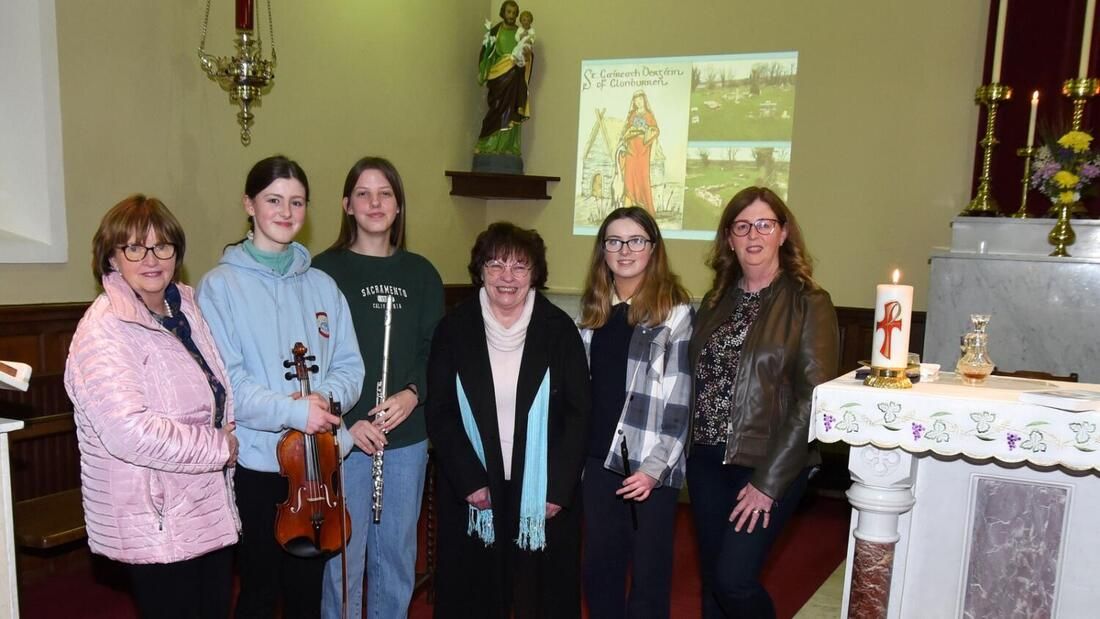
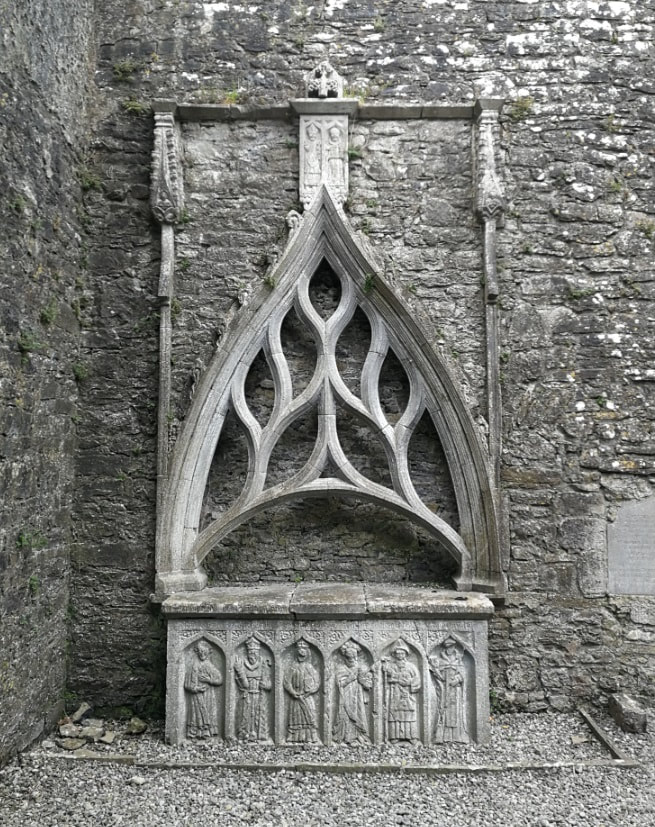
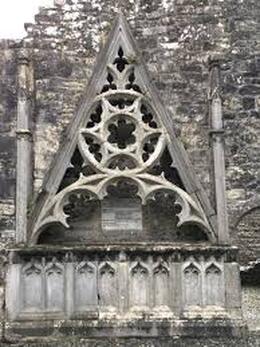
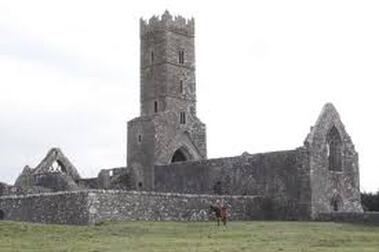

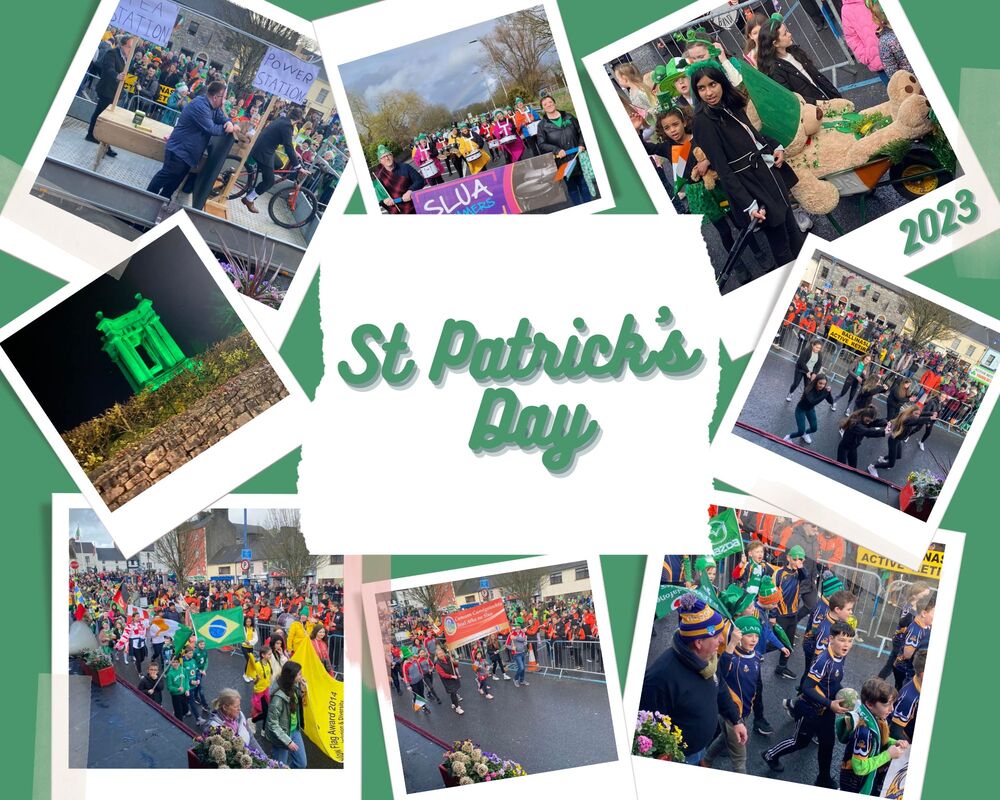
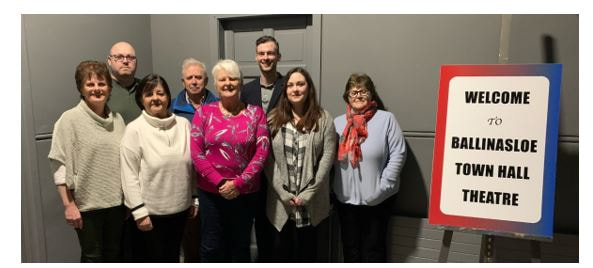
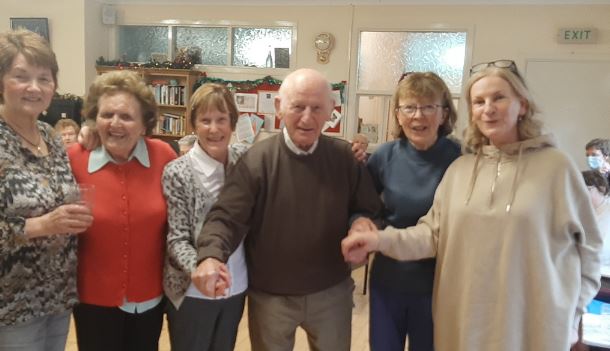
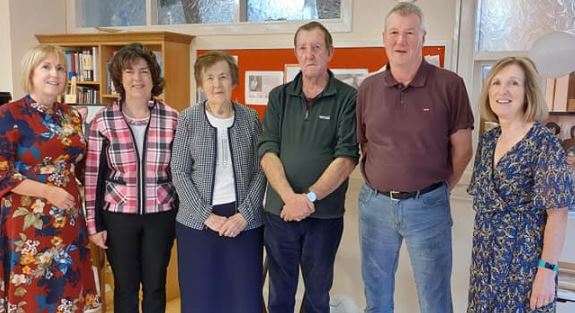
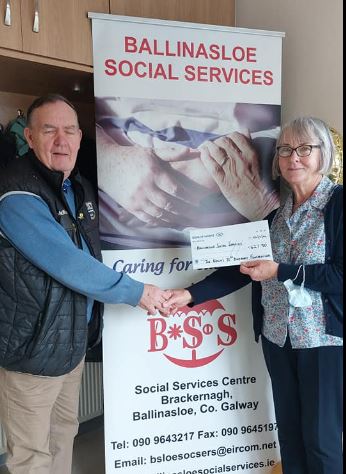
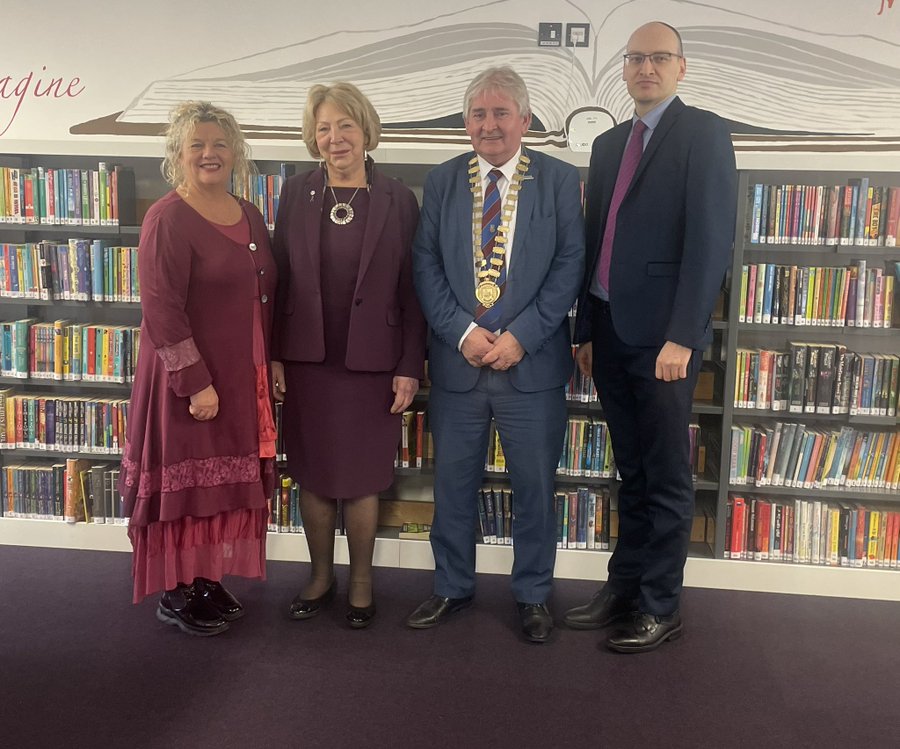
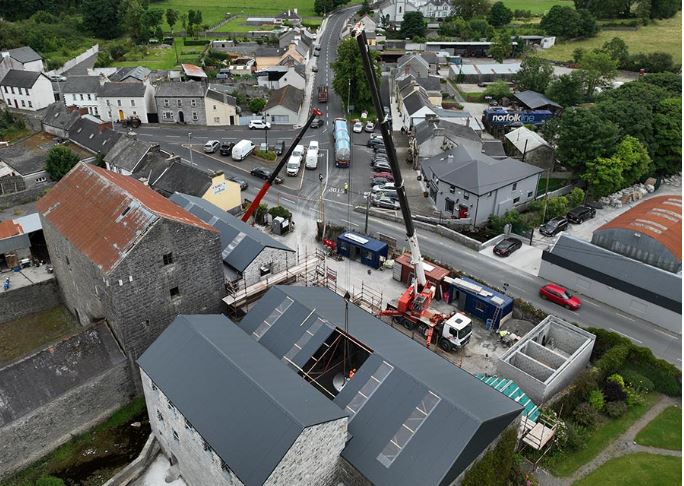
 RSS Feed
RSS Feed
